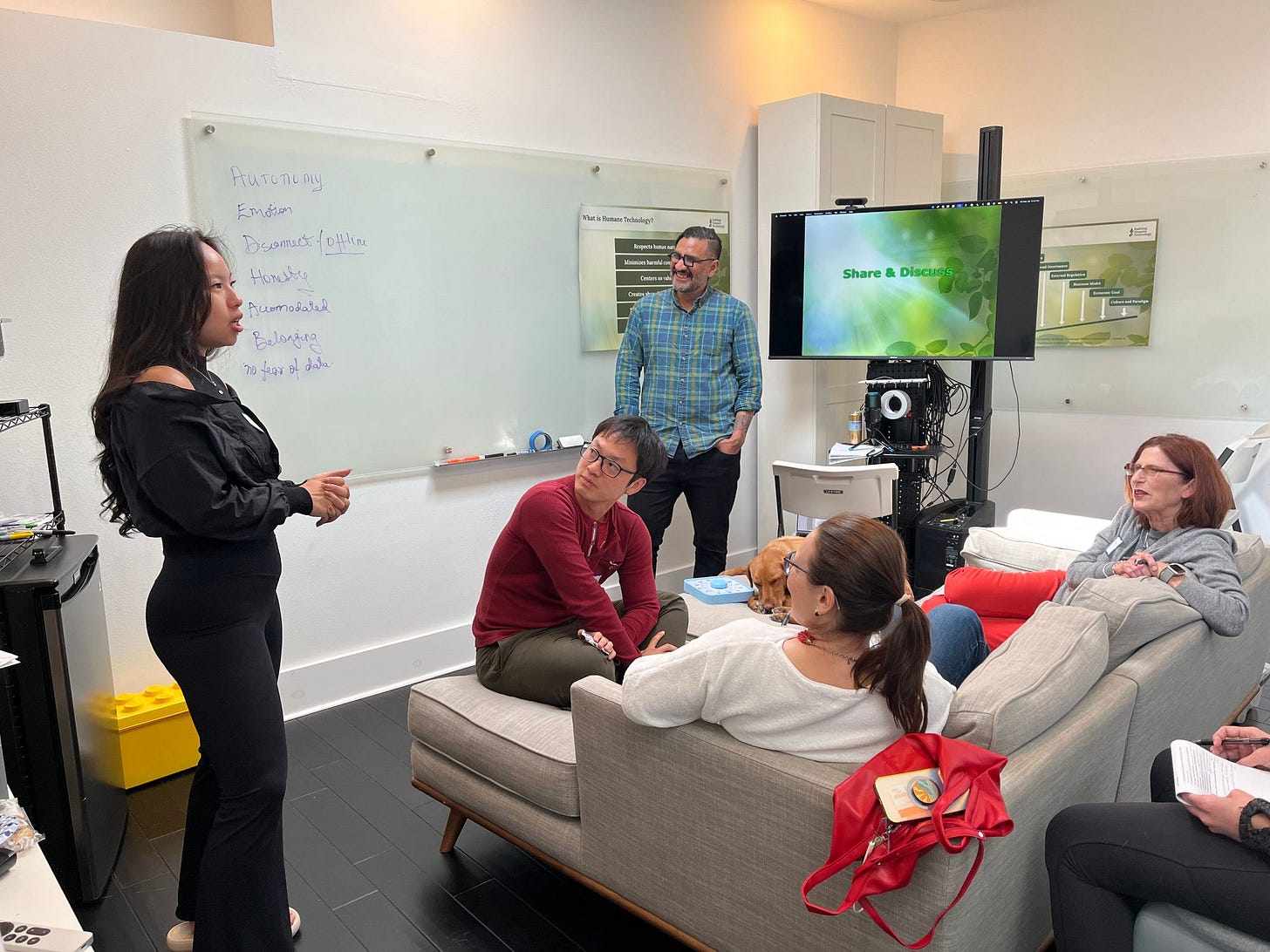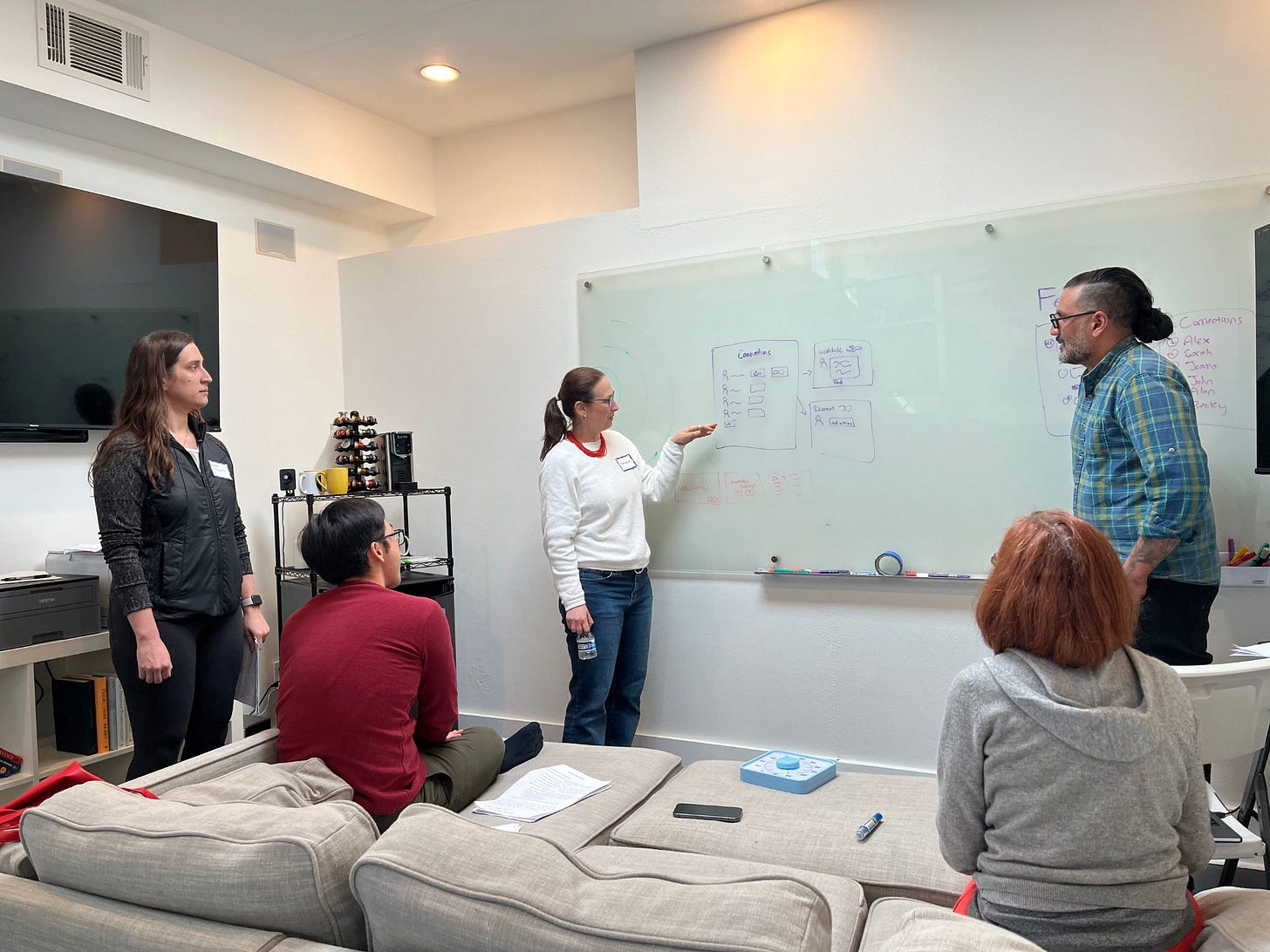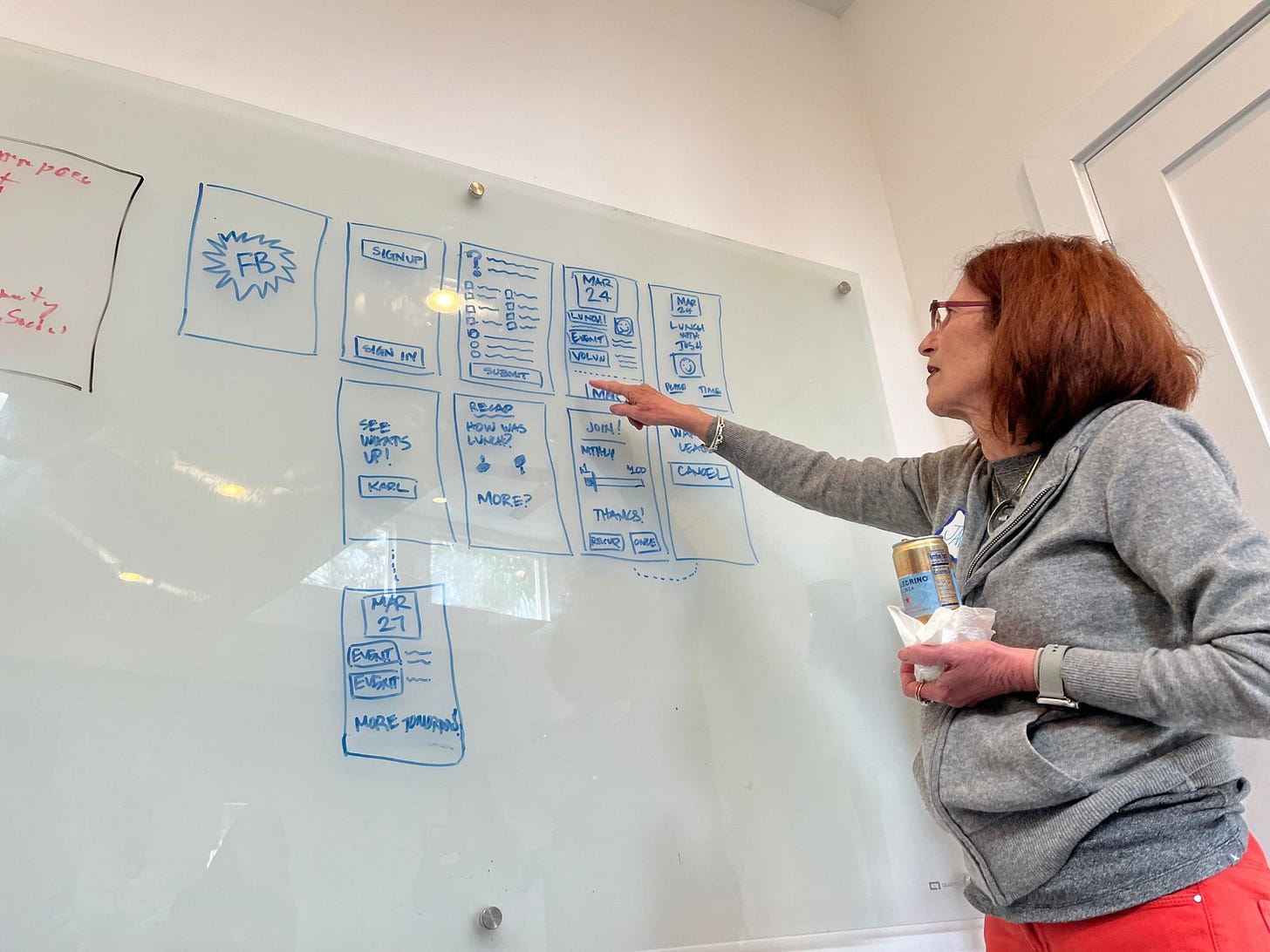Redesigning from the inside out
Facebook, feelings, and metrics of care
There’s a particular kind of silence that fills the room when a question lands. Not because no one knows what to say, but because everyone knows it matters. That was the moment we arrived at in our March 28 workshop, which I co-led with
.Printed on the wall, among name tags and Storytell mugs, was the prompt:
“What would Facebook look like if it were rebuilt for human flourishing?”
It was simple, even familiar. But it did something. It invited us to stop fixing around the edges and begin imagining from the center.
Who showed up—and why it matters
We gathered in a living room in the Bay Area. Not just for atmosphere, but for the kind of permission you don’t always get in conference rooms.
Attendees had a range of roles and experiences—product designers, researchers, systems engineers, founders. Some had recently left large tech companies. Others were building new products and trying to do it differently from the start.
What united them wasn’t ideology but a quiet knowing: the way we build tech is shaping how we relate to ourselves and each other—and it’s time to reckon with that.
We designed from feelings first
One of the first exercises asked: “What does it feel like when a product supports your well-being?”
Not what it does. What it feels like. The responses were clear, specific, and personal:
“I feel present when I don’t feel pulled in multiple directions.”
“I feel cared for when the platform accommodates my pace, not the other way around.”
“I feel fulfilled when I can be honest—and that honesty is welcomed.”
From those emotional truths, we began reimagining Facebook from the ground up. Not to fix it, but to stretch our collective design imagination.
We asked: What would this platform offer if it were aligned with care, integrity, and long-term well-being? These are the promises of humane technology.
The kind of stories that don’t need metrics to make sense
We moved on to user stories. Not wireframes or roadmaps, but real-life moments where someone logs on, interacts with a few deeply meaningful posts, and logs off feeling more connected than when they arrived.
In one sketch, a user named Maya opens the app after a long day and finds three intentional updates from people she’s marked as close. A voice note. A memory. She responds, smiles, and closes the app. Five minutes. No pressure to scroll. No algorithm nudging her to stay. Just enough.
That was the thread we kept pulling on: What would “enough” feel like in a tech experience?
And why aren’t we designing for it?
When business models shift, everything else does, too
Of course, to change a platform like Facebook, you have to change its business model. If it’s still based on generating revenue from advertisers, time on app will be the most important metric, which drives everything else. See Donella Meadow’s leverage points to understand why.
So, what’s the business model behind care?
Attendees explored co-op models, limited-time subscriptions, low-cost tiers focused on dignity over data. No one claimed to have the perfect answer, but everyone recognized that how we fund tech shapes what we measure and what we ignore.
Redesigning a product without rethinking its model is like rearranging a room while the foundation cracks beneath it.
Mockups without gloss
Next up, we prototyped one meaningful moment. A single screen. A short flow. A visual metaphor.
Some drew rest-oriented interactions, while others emphasized transparency or emotional boundaries. One participant drew a notification flow that simply asked, “Do you need a pause?”
The ideas weren’t flashy. They were intentional. And they didn’t need polish to carry weight.
Redefining success, softly
We ended by asking: What does it mean to succeed in a system built for flourishing? What metric, whether quantitative or qualitative, would show this?
The responses varied:
A user logs off and feels more like themselves.
A feature reminds someone of their agency, not their obligations.
A platform becomes a tool for community, not consumption.
Some of these KPIs appear harder to track, but that doesn’t mean we shouldn’t try. Everything’s an experiment, an opportunity to learn. And there’s a lot for us to learn about how tech affects users. We could start by asking, in app, how do you feel after using this app? And give emoji options.
Leaving with an action to take
We closed by writing down a commitment: one thing we could each do in the next 30 days. We came up with deadlines and made accountability partners to ensure we would stick to this promise.
A few examples:
Emailing a tech CEO about his employees’ response to the teen mental health crisis to ask his team to do better
Incorporating humane tech principles into a startup’s pitch deck to better align product storytelling and fundraising with long-term well-being goals.
Why this kind of space matters
This workshop wasn’t about innovation theater. It wasn’t built to inspire, perform, or promise too much. It was a collaborative experiment to redesign from the space of what matters most.
It confirmed something I’ve sensed in so many conversations lately: We don’t lack people who care. We lack spaces where that care can become practice. This was one of those spaces. And it worked.
Now for gratitude: Thanks to UpHonest Capital for sponsoring our Humane Tech events, including this workshop. And thanks to everyone who attended, dedicating half their day to building a more humane world with technology.
We’ll keep running these trainings in different forms—with teams, orgs, and communities who want to build with more integrity, more context, and more room to ask better questions.
If that sounds like you, I’d love to talk.





